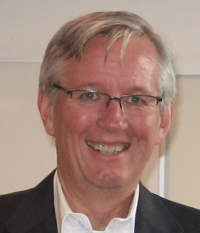
Rethinking The Role Of The SDR (Sales Development Representative)
Recently, I’ve been on a bit of a rampage, rethinking how we identify and pursue opportunities. In this post, I’m trying to look at how we deploy people to actually find these opportunities.
I’m a terrific fan of the concept of SDR’s (Sales Development Representatives). It’s critical to build specialized skill to have high impact first engagements with customers. In most organizations, prospecting and finding enough opportunities is a critical problem, so applying specialized skills at the very front end of the customer engagement seems to make sense.
But I wonder if we have it right when we think about their role, who we hire, what we expect them to do.
My experience is that SDR’s are typically entry level roles in sales. Great/enthusiastic people are hired. They are well trained, have the right tools, and (hopefully) well managed and coached.
I’ve sat with and received calls from many SDR’s. Some are very good, they listen well, and ask good questions. They suggest appropriate next steps. But they are comfortable only staying in the bounds of what they are trained to do or what their scripts help them do. Once you start getting away from that, they struggle. The best suggest a meeting with someone else, the rest struggle—as they should.
But when we think about their role, high impact first engagements with customers, are those people – entry level sales people or even very good entry level sales people; are they the people that should be disrupting our customers, getting them to think differently, challenging what customers are doing now, suggesting they might change?
The problem is dealing with the engaged customer!
What happens when the SDR hits a customer that wants to be engaged? The customer wants to learn about changing their business. They want to do a deep dive into the challenges, their strategies, new opportunities. The only answer for the SDR, what they actually hope for, is to arrange a meeting with the right sales person. There’s a customer that’s hot and lathered, and the SDR has to slow them down, adding more time and another step.
Or what about the customer that should be engaged, but needs their thinking disrupted. We have to incite them into thinking about their businesses differently. The SDR isn’t even finding these opportunities.
Successfully engaging customers in these conversations requires deep industry and market knowledge. It requires deep understanding of business and how businesses work. It takes a confidence borne of experience and of having your teeth kicked in a few times, but learning to have focused, deep business conversations.
Are we setting our current crops of SDR’s up for failure?
Are we setting our current crops of SDR’s up for failure because we are asking them to do something they shouldn’t reasonably be expected to do? A good number of “seasoned” sales people can’t even do this. Is our model for leveraging SDR’s even the right model? Are we completely missing opportunities because we have the wrong engagement model and the wrong people doing the engaging?
CEB calls the people who do these things very well “Challengers.” Others call them Insight Sales People or Consulting Sales People or Grizzled Veterans or High Performers or any other label.
Perhaps, we should be rethinking the role of SDR and who we put into those roles. Perhaps rather than an entry level role, we should think about putting our very best most knowledgeable Challengers.
We want to be able to reach those customers not figuring out what to buy, but those who may not recognize the need to change. Or those that are starting down the path, but struggling to figure it out–not what to buy, but what the problem is or how to buy.
After all, if in our very first calls, we are getting them to rethink their business, they start looking to us for leadership, to learn more. Is it fair to expect an entry level sales person to do this? Are we missing opportunities because they can’t or aren’t?
In reality, I think there need to be two types of SDR’s
Both types important, but with very different jobs and target responsibilities.
The first, the one’s we hire, train, develop today, I think actually are focused on catching the customer at a different point in the buying process. If you’ll forgive leveraging the tired CEB data, I think most SDR programs are designed to find customers reaching 57%—perhaps intercepting them a little earlier at 50% or so. We need people doing this. But to be honest, that’s the smallest part of the opportunity.
The huge opportunity exists before the opportunity is even an opportunity. It is reaching out to those who don’t know they need to or should change. The numbers there are huge. Again, leveraging CEB data, most buying cycles blow up 37% into the buying process. So our traditional SDR’s would never even encounter that opportunity. But those people wanted to buy!
We need SDR’s that can incite customers into recognizing an opportunity or wanting to solve a problem. We need SDR’s that can recognize the difficulty customer have in organizing themselves to figure out how to solve the problem and provide leadership to help them move forward, rather than blowing up at 37%.
Those SDR’s have the same objective, having high impact first engagements with customers. But the skills. capabilities and experience, as well as the engagement process itself, is very different.
Maybe we need to think of promoting our very best, most experienced people into SDR roles for those jobs. Think of how many new opportunities they could find, if we only turned them loose on the world?

By Dave Brock
Dave has spent his career developing high performance organizations. He worked in sales, marketing, and executive management capacities with IBM, Tektronix and Keithley Instruments. His consulting clients include companies in the semiconductor, aerospace, electronics, consumer products, computer, telecommunications, retailing, internet, software, professional and financial services industries.
Find out more about Dave Brock on LinkedIn







